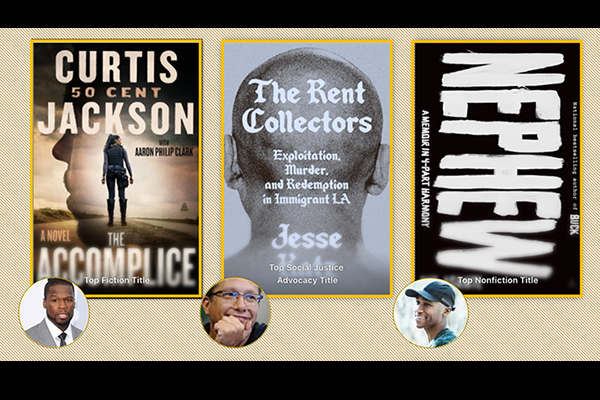Asante is a teenager growing up in various Philadelphia neighborhoods, and his life is, by just about any measure, a mess. He’s got a stepbrother in jail, a sister in a mental institution, and a circle of friends whose lives have been touched too often by violence, chaos and death.
“Do I contradict myself?” he reads in Walt Whitman’s epic poem “Leaves of Grass.” “Very well, then I contradict myself, I am large, I contain multitudes.”
Much in Asante’s life is contradictory. And his memoir contains multitudes: the rich and varied people of 1980s black Philadelphia. He’s a smart kid, growing up in a town he and his friends call “Killadelphia, Pistolvania,” for its drug- and gang-caused violence. His university professor father is known outside the home as “the father of Afrocentrism,” but he enrolls Asante in a private and predominantly white prep school.
He does this even while professing in an interview on “60 Minutes,” “I can honestly say that I have never found a school in the United States run by whites that adequately prepares black children to enter the world as sane human beings.”
Asante is now a filmmaker and author of three previous books, including “It’s Bigger Than Hip-Hop: The Rise of the Post Hip-Hop Generation.” “Buck” is his coming-of-age story, opening when he is 12. He goes by the name Malo, short for Khumalo.
Young Malo is something of a disciple to the two strong personalities who shape the book’s early chapters. The first is his larger-than-life father: MK Sr., known in this book as Pops. The elder Asante is a public figure who’s invited to debate the likes of Cornell West and Arthur Schlesinger. At home he’s a dominant presence too. Among other things, he doesn’t allow his family to celebrate either the Fourth of July (“Whose independence are you celebrating?”) or Christmas (“We can’t celebrate some big fat white man bringing us gifts”).
Pops fights with Malo’s other role model, Uzi, the older brother he reveres. “Uzi is the color of walnuts and has a long, sharp face like the African masks my dad hangs up everywhere,” Asante writes. He’s an angry man-child, and doomed, but Malo idolizes him so much “I even duck like him under doorways, even though he’s way taller and I don’t need to duck.”
The wordplay in these early pages is often extraordinary, as Asante delights with one original turn of phrase after another. The dawn sky is “the color of corn bread and blood.” When Uzi heads off with friends for a ride in a stolen car, he is “jailbreak joyful.” Uzi starts a new crew which adopts the acronym N.A.M., three letters that stand for as many different names as its members can think of: “New Age Militia … Nubian Apocalyptic Military … Niggaz Anglos and Mexicans … Narcotics and Money.”
After Uzi gets thrown out of the house he winds up, inevitably, in the criminal justice system. Pops leaves home too. With their big personalities suddenly off stage, “Buck” begins to lose some of its energy.
Suddenly, Malo is a teenager living alone at home with his single mother, Amina, nee Carole. Amina is fighting many demons — including a violent previous husband and an absent second one. At school Malo engages in the kind of aggressive acting out that leads some kids to get Ritalin prescriptions. His mother eschews chemical cures, however, though she takes heavy doses of antidepressants herself.
Amina, a former dancer, writes in a journal, addressing letters to her old self with the non-African name (“Dear Carole”). Her letters — which Malo is secretly reading — tell the story of her painful upbringing and the huge empty space in her heart. Asante reproduces those letters at length.
“I am dying a little inside, but they don’t know who I am,” Amina writes of the men and boys in her life. She’s still “the little girl from Brooklyn who can throw down with the best of them.”
Malo, meanwhile, starts to partake of the pleasures and the power trips available to young men willing to take risks with firearms and wholesale quantities of illicit substances.
It takes great skill to render the wide variety of characters, male and female, young and old, that populate a memoir like “Buck.” Asante seems more confident depicting maleness, and he’s at his best when he sets out into the city of Philadelphia itself. In fact, that city is the true star of this book. Philly’s skateboarders, its street-corner philosophers and its tattoo artists are all brought vividly to life here.
“Hot boys stuntin, fly girls struttin, everybody showin out,” Asante writes. “Girls, every shade of brown, colorful as feathers, brush by looking like queens, stars, models, video vixens, hood rats …”
In its final chapters, “Buck” reaches for an ending that feels almost too easy and conventionally uplifting. One senses, however, that Asante’s memoir will find an eager readership, especially among young people searching in books for the kind of understanding and meaning that eludes them in their real-life relationships.
Malo’s own path to redemption goes through great works of literature, starting with Kerouac, whose declaration of loyalty to “the mad ones, the ones who are mad to live, mad to talk” strikes a nerve with him. Asante has largely succeeded in finding the “mad” words that give voice to Malo’s “mad” desire to live, and that makes “Buck” a powerful and captivating book.
Buck
A memoir
MK Asante
Speigel & Grau: 272 pp., $25


